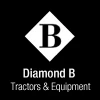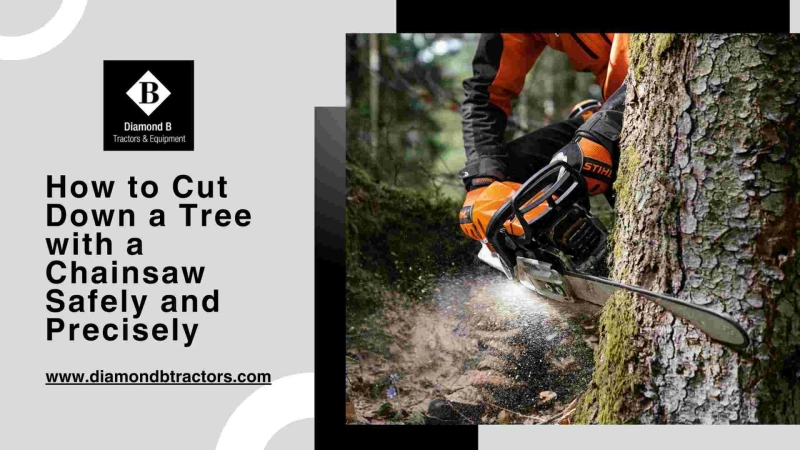Trees are magnificent beings that provide oxygen, shelter, and calmness. Unfortunately, there are instances when it becomes essential to cut down a tree for safety reasons, space limitations, and landscaping objectives. In such circumstances, homeowners and professional arborists encounter a questions like how to cut down a tree with a chainsaw. In this situation, they must understand the proper method to down a tree securely and accurately is essential. Whether you're an expert tree surgeon or a homeowner embarking on a tree removal task, prioritizing safety is paramount. By adhering to proper techniques and using appropriate equipment, individuals can mitigate risks and ensure a smooth and secure tree-cutting process with Stihl Chainsaws, which are essential to safeguard people and property.
This blog discusses the unique steps to safely and precisely cut down trees with a Chainsaw by ensuring minimal risks and optimal results.
Before going into the precise details regarding cutting down trees with a chainsaw, let us understand the equipment precisely and accurately.
Basic Overview Regarding The Equipment and Starting the Task
Before starting the cutting task, you must familiarize yourself with the chainsaw you will utilize. Confirm it's in prime condition, with sharp blades and proper chain tension.
Preparing to fall a tree necessitates gathering the requisite equipment and understanding its structure.
Here's what you'll require: a chainsaw suitable for the tree's size and power needs, along with protective clothing, including a helmet, safety glasses, ear defenders, gloves, and specialized trousers. Keep a first aid kit nearby for prompt attention to injuries or accidents. Clear the vicinity of any obstructions or visitors to prevent accidents within the tree's potential falling path.
Variety of Steps To Cut Down A Tree With A Chainsaw
Assessing the Area of the Tree for Cutting Requirements
Before proceeding, a comprehensive assessment of the tree's characteristics is crucial. Determine its height and angle of lean and identify any obstacles in the surrounding area. Plan a lean and identify any obstacles in the surrounding area. Plan a clear escape route in case the tree falls unexpectedly. If the tree poses risks to nearby power lines or structures, seeking professional advice to minimize the use of chainsaws is recommended.
Create A Tree Felling Plan
Creating a felling plan involves carefully selecting the intended path for the tree's fall and outlining a safe pathway for your retreat. There are various factors in the tree’s natural lean, and scrutinize the surroundings for any obstacles that might obstruct its downward trajectory. This seamless planning helps execute the tree removal process with safety and precision.
Making The Initial Cuts
You must start the task by initiating a horizontal Start by initiating a horizontal cut, commonly and precisely referred to as a notch, on the side of the tree that aligns with the intended direction of the fall. This initial cut through the Stihl Chainsaws should encompass approximately one-third of the tree's width and penetrate roughly one-third into the trunk. Following this step, you can craft a second cut slightly above the first one, shaping it at a 45-degree angle to the initial cut. This sequential action forms a wedge-like notch, enhancing control over the tree's descent.
Creating the Back Cut
Afterwards, the notch is completed, and you can proceed to the tree’s opposite side to commence the back cut. Align this cut horizontally with the bottom of the notch and position it slightly above the initial horizontal opening cut. So, you can begin the back cut by ensuring the Stihl equipment remains level and steady, facilitating an even and straight cut along the designated path. You can find the perfect match by selecting the right stihl chainsaw for your cutting needs and considering the back cut.
Monitor the Movement Of Trees
You should continuously monitor the tree’s movement as you proceed with the back cut, staying alert for any signs of deviation from the planned trajectory. Suppose the tree shows unexpected behavior or starts falling prematurely, be prepared to hold cutting immediately and relocate to your designated escape route. Keeping a distance from the falling tree is crucial for personal safety.
Complete the Felling
Upon completing the back cut, force the tree to control its descent, employing wedges or a felling lever if necessary. Retreat to your predetermined escape route and stay attentive, monitoring the tree's fall until it lands securely on the ground. Following the tree's descent, power down the equipment after cutting down trees with a chainsaw, and thoroughly evaluate the vicinity to identify and address any potential hazards or obstructions before proceeding with subsequent tasks. After completing the tree-felling tasks, you can go through the beginner’s guide to mastering chainsaw safety and technique.
Get Expert Advice Regarding the Precise Cutting Down Trees With a Chainsaw
Successfully cutting down trees with a chainsaw demands advanced preparation, meticulous preparation, expertise, and unwavering focus on safety. By adhering to the outlined steps in this guide and placing safety as the utmost priority throughout each phase, you can effectively and accurately eliminate trees from your premises or work area. It's crucial to evaluate the tree consistently, devise a comprehensive felling strategy, and don appropriate safety attire to mitigate potential dangers and attain the best possible outcomes. Suppose you are in a business where cutting trees is of prime importance. You can contact Stihl Chainsaw dealers in Texas, who offer a range of chainsaws suitable for cutting trees and other useful purposes.


